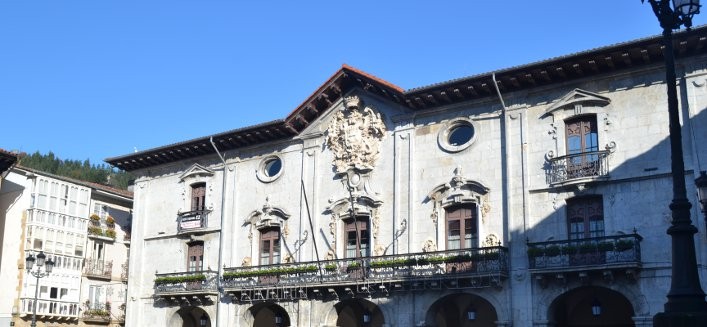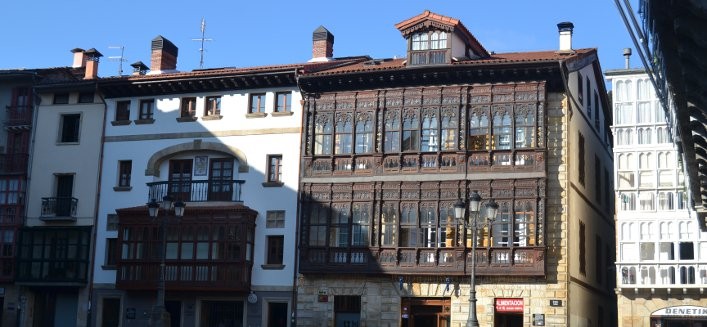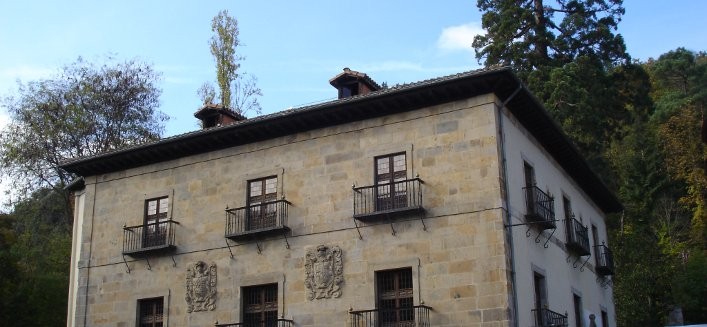A period of peace and economic prosperity during the 17th century brought about industrial and urban development.
Monterron Mansion is located at the entrance of the suburb of Zarugalde. Its Herrerian Baroque style translates into an uncluttered structure free of almost any decoration. Notable are the balconies made of forged iron and the two coats of arms of the Andikano-Zelaa and Aranguren-Unzueta families on the main façade. The importance of this building lies not only in its monumentality, but also in the fact that important personalities such as Phillip V and Queen Maria Cristina visited the town. The neighbouring park has a wealth of botanical specimens: giant Wellington redwood, magnolia, yew, cedar and lime trees, as well as other decorative shrubs.
Okendo Mansion sits in the suburb of Magdalena. The most significant feature is the coat of arms of the Barrutia family carved in sandstone.
The Andikano Loiola family built this mansion in the middle of the historic centre, next to the Town Hall. The design is classic Herrerian, made of ashlar stone. Despite the façade being decorated with two large coats of arms, they cannot be seen from the outside as they are hidden by a veranda. Its decorative style is Neo-Gothic, completed in the 19th century, is today one of the most beautiful features of the square.
18th century documents described Arrasate as a well-developed centre: it consisted of three thoroughfares within the walled area, 3 convents, beautiful promenades, 5 suburbs and 3 hamlets. A total of 1700 people lived there in a total of 289 houses.
Following the prosperity of the previous century, the situation was not promising. The foundries were declining and there was a general economic downturn. Despite this, a work of great significance, the Town Hall, was built.
Designed by the Guipuzcoa architect Martin de Carrera in 1755, this 18th century complex consists of a typically Baroque square and is well-worth a visit. The limestone façade of the building has an open portico with five basket-handle arches, a continuous balcony on the main floor and, to finish off, a pediment with the coat of arms breaking the line of the eaves.
Despite being an austere building, the Town Hall includes rich decorative elements in the French Rococo style that was fashionable at the end of this century: winged cherubs, cornices, volutes and stone elements.
The same decoration is repeated in Oñati Town Hall.





